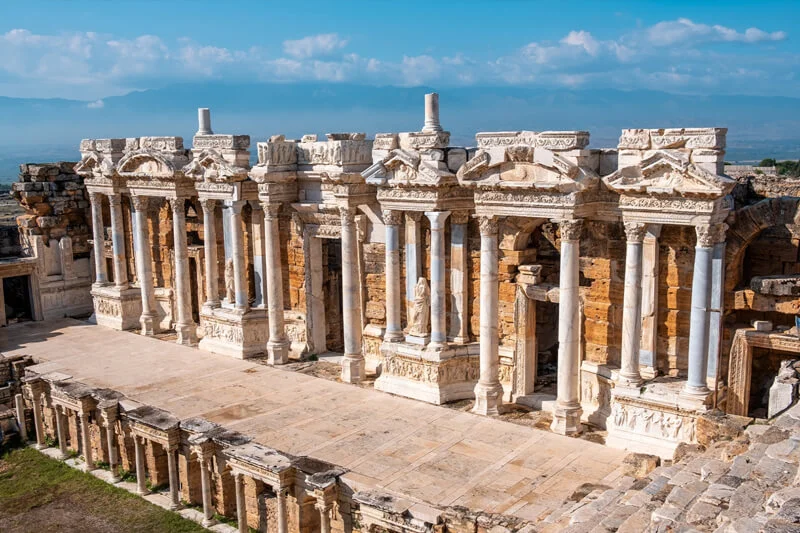Hierapolis is an ancient city located in southwestern Turkey, near the modern city of Pamukkale. It is recognized as a UNESCO World Heritage Site and is renowned for its well-preserved ruins and the unique natural phenomenon of the nearby travertine terraces.
Hierapolis was founded in the 2nd century BC by the Hellenistic Seleucid Empire and later became a Roman city. It flourished as a center of culture, commerce, and religion, and its strategic location along trade routes contributed to its prosperity.
Hierapolis boasts a large and impressive theater that could accommodate up to 12,000 spectators. It is one of the best-preserved ancient theaters in Turkey and hosts occasional performances and events.
The Necropolis of Hierapolis is renowned for its extensive collection of well-preserved and intricately decorated tombs and sarcophagi. The necropolis is located just outside the city walls and provides a fascinating glimpse into ancient burial practices.
Hierapolis was known for its thermal springs, and the city had several well-preserved Roman baths that served as social and recreational centers for its residents.
Situated in the city center, the Temple of Apollo was an important religious site dedicated to the god Apollo. Although mostly in ruins, its foundations and some columns still stand.
Hierapolis is closely associated with the natural wonder of Pamukkale, which means “Cotton Castle” in Turkish. Pamukkale features unique travertine terraces formed by mineral-rich thermal waters cascading down the hillside. The terraces create a stunning white landscape that is both visually striking and believed to have healing properties. Visitors can bathe in the thermal waters and explore the terraces, which are a UNESCO World Heritage Site. Hierapolis had a significant religious and spiritual role in antiquity. It was known as a center for the worship of deities such as Apollo and Pluto, and it was also associated with the cult of Cybele, an Anatolian goddess.


Comment (0)